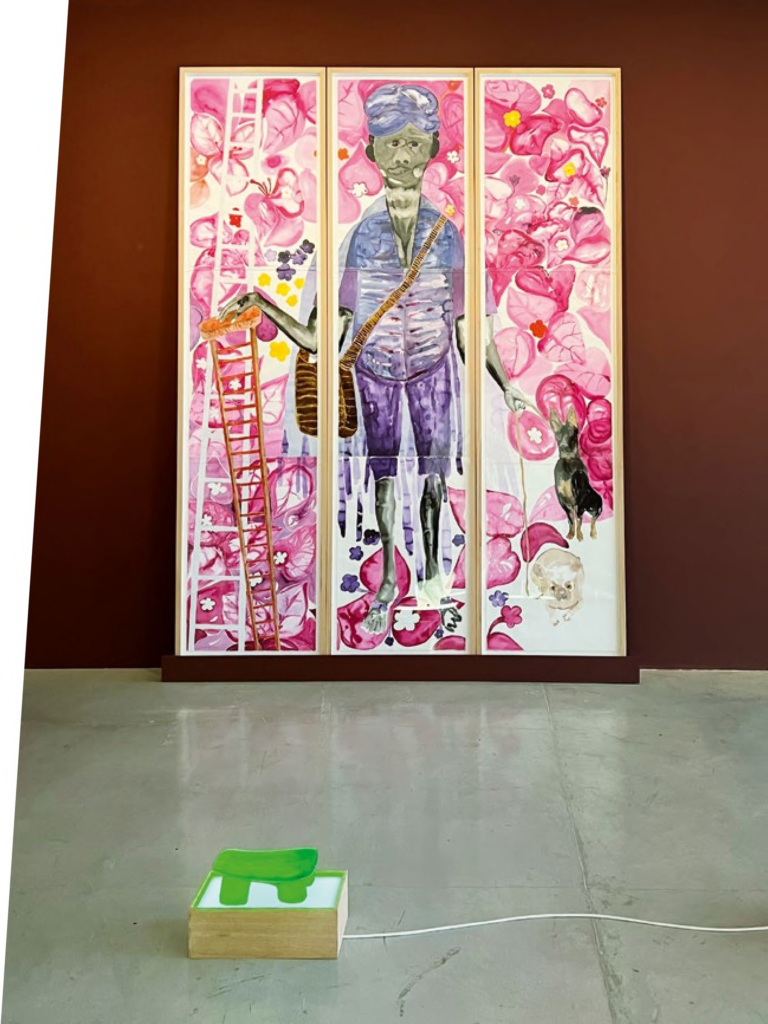Born 1959 in Matanzas, Cuba, lives and works in Nashville, TN, United State
Liminal Circularity
2021-23
Afro-Cuban artist María Magdalena Campos-Pons addresses the African diaspora, spirituality, collective resistance, and healing in her multidisciplinary practice. Studying in Havana, she received degrees from the Escuela Nacional de Arte in 1980 and the Instituto Superior de Arte in 1985, gaining international recognition as part of the New Cuban Art movement. Moving to the US, she received an MFA from Massachusetts College of Art and Design in 1988. Campos-Pons is currently the Cornelius Vanderbilt Endowed Chair Professor of Fine Arts at Vanderbilt University in Nashville. Her work has been exhibited at documenta 14 (2017) and the 55th Venice Biennale (2013). She is a 2023 recipient of the Macarthur Fellowship.
With African, Cuban, and Chinese descent, Campos-Pons describes her work as a “merging of ideas, merging of ethnicities, merging of traditions.” Family history and autobiography become a means of unpacking and commenting on the political. Liminal Circularity (2021–23) consists of two large painted portraits, each divided into multiple vertical panels, which represent a female and a male figure. They are part of a series of portraits that pay homage to family members, particularly women, who endured the Middle Passage—the Atlantic slave trade route from West Africa to the Americas. Each painting merges the traits of the portrayed person with symbolic elements attributed to a specific orisha, one of the many deities that make up the Yoruba pantheon of the Santería religion.
The paintings are accompanied by two translucent stools, cast in glass from a wooden original passed down in Campos-Pons’ family from generation to generation. One of the glass stools is yellow, representing Oshun, the manifestation of divine femininity, fertility, love, and fate; the other is purple, standing for Babalú-Ayé, a manifestation of the supreme creator and a spirit of the earth associated with healing. The stools are part of a set that the artist displays on rectangular lightboxes, often arranged in triangles or circles. They reflect a two-fold sentiment of absence and presence, representing the myriad human lives lost to slavery and exploitation, while simultaneously symbolizing ancestral legacies, the divine force of the orishas, and the collective memory of diasporic narratives. The arrangement thus becomes a site of remembrance, return, and healing.



